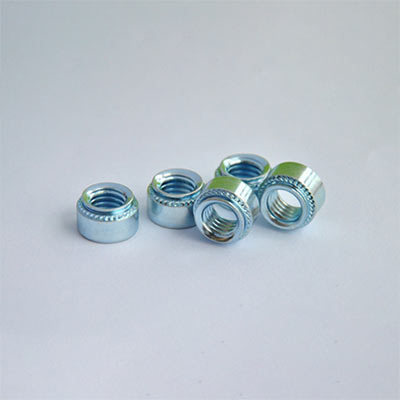Pem Self-clinching Nuts are an innovative solution for securing fasteners to thin metal sheets and other materials. They are designed to offer a reliable, long-lasting connection without the need for welding or additional fasteners. The installation process is simple and efficient, allowing for quick assembly while maintaining strong mechanical properties. This article provides a detailed step-by-step guide on how to install Pem Self-Clinching Nuts, along with necessary tools and important installation considerations.

Pem Self-Clinching Nuts are designed with a serrated or knurled surface that, when pressure is applied, embeds into the metal sheet. This creates a strong, permanent bond, preventing the nut from spinning or coming loose. These fasteners are ideal for applications requiring reliable connections in thin gauge materials, where traditional fasteners or welding may not be feasible.
Preparation
Verify that the thickness of the metal sheet is suitable for the Pem Self-Clinching Nut (typically between 0.5mm and 3.5mm).
Select the correct size of the nut, ensuring the pre-drilled hole matches the required specifications for proper insertion.
Prepare the necessary installation tools, such as a hydraulic press, punching machine, or manual press, which will provide the required pressure to insert the nut into the material.
Drill the Hole
Drill a hole in the metal sheet according to the nut's size specifications. The hole diameter must correspond with the size of the nut to ensure a tight fit.
The hole must be accurately positioned and drilled to ensure proper nut placement, as misalignment can affect the integrity of the connection.
Place the Nut in Position
Place the self-clinching nut into the pre-drilled hole, ensuring it sits evenly and securely within the hole. Take care not to tilt or misalign the nut as it can cause installation issues.
If the metal surface is contaminated with oil or dust, clean it thoroughly to ensure a solid connection and optimal nut embedment.
Apply Pressure for Installation
Using the press or punching machine, apply controlled pressure to embed the nut into the metal surface. Ensure that the nut remains aligned and does not tilt during installation.
The pressure causes the nut’s serrated teeth to embed into the metal sheet, locking it firmly in place.
The applied pressure should be enough to embed the teeth fully but not so high that it causes the material to deform or the nut to break.
Verify the Installation
After installation, check the nut for stability and ensure it does not rotate or loosen. If there is any movement, the nut may not have been installed properly and may need to be reinserted.
Verify that the nut can withstand the required torque and pull-out forces as per design specifications, ensuring it provides the necessary connection strength.
Hole Diameter Precision: The pre-drilled hole must be accurate in diameter and position for proper nut insertion. CNC machines are recommended for drilling to ensure precision.
Surface Cleanliness: Clean the surface of the metal sheet to remove any oils or dirt that could hinder the nut's ability to properly embed into the material.
Pressure Control: The applied pressure must be sufficient to embed the nut without overloading the metal sheet or causing distortion. It is important to use a machine with adjustable pressure to ensure uniform embedding.
Tool Selection: It is best to use a hydraulic press, punching machine, or other controlled pressure equipment to ensure the nut is installed evenly and accurately.
Durable and Stable: Pem Self-Clinching Nuts provide excellent torque resistance and pull-out force, ensuring long-lasting and reliable connections.
Quick Installation: Compared to welding or traditional fasteners, these nuts offer a much faster installation process, which is ideal for mass production environments.
Wide Range of Applications: Self-clinching nuts can be used in various applications, including electronics, automotive, and industrial machinery, for thin metal sheet assemblies.
Environmentally Friendly: The installation process avoids the need for welding, reducing environmental impact and offering a low-temperature solution for sensitive materials.
Pem Self-Clinching Nuts are an excellent choice for securing fasteners in thin metal sheets without the need for welding. Their simple yet effective installation process allows for quick and reliable assembly while maintaining the integrity of the material. By following the proper installation steps and using the right tools, you can ensure a stable, long-lasting connection that performs well under high stress and load conditions.